Insurance Analytics Market Size
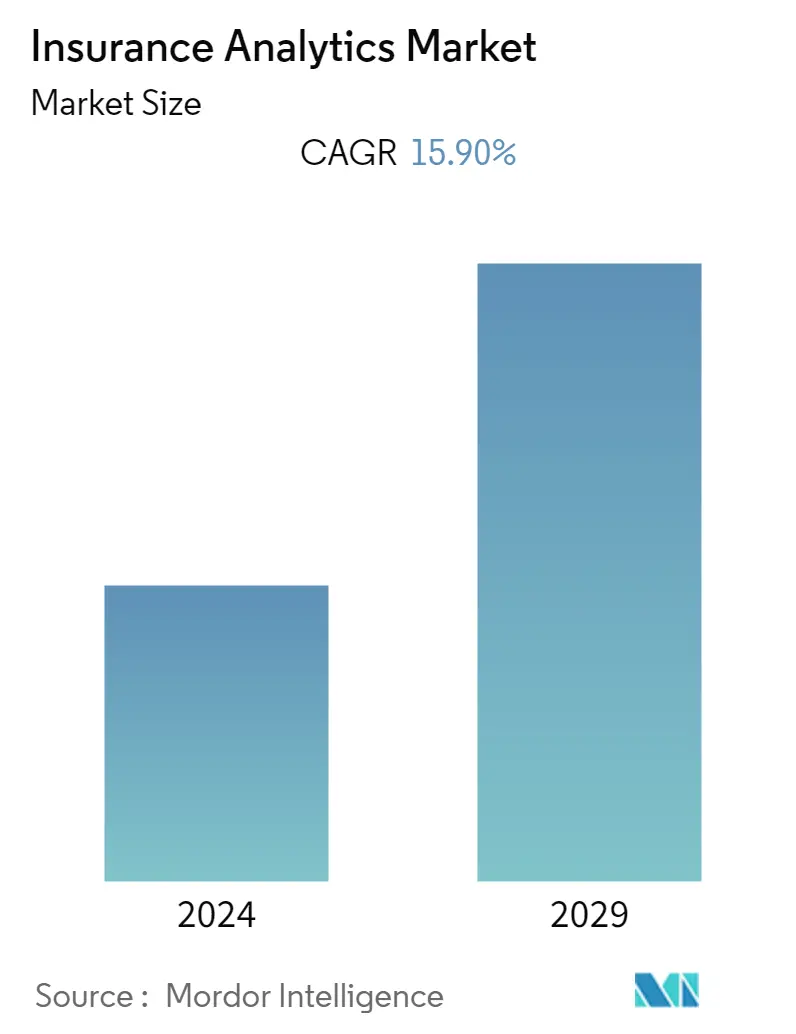
| Study Period | 2018 - 2028 |
| Base Year For Estimation | 2022 |
| CAGR | 15.90 % |
| Fastest Growing Market | Asia Pacific |
| Largest Market | North America |
| Market Concentration | Medium |
Major Players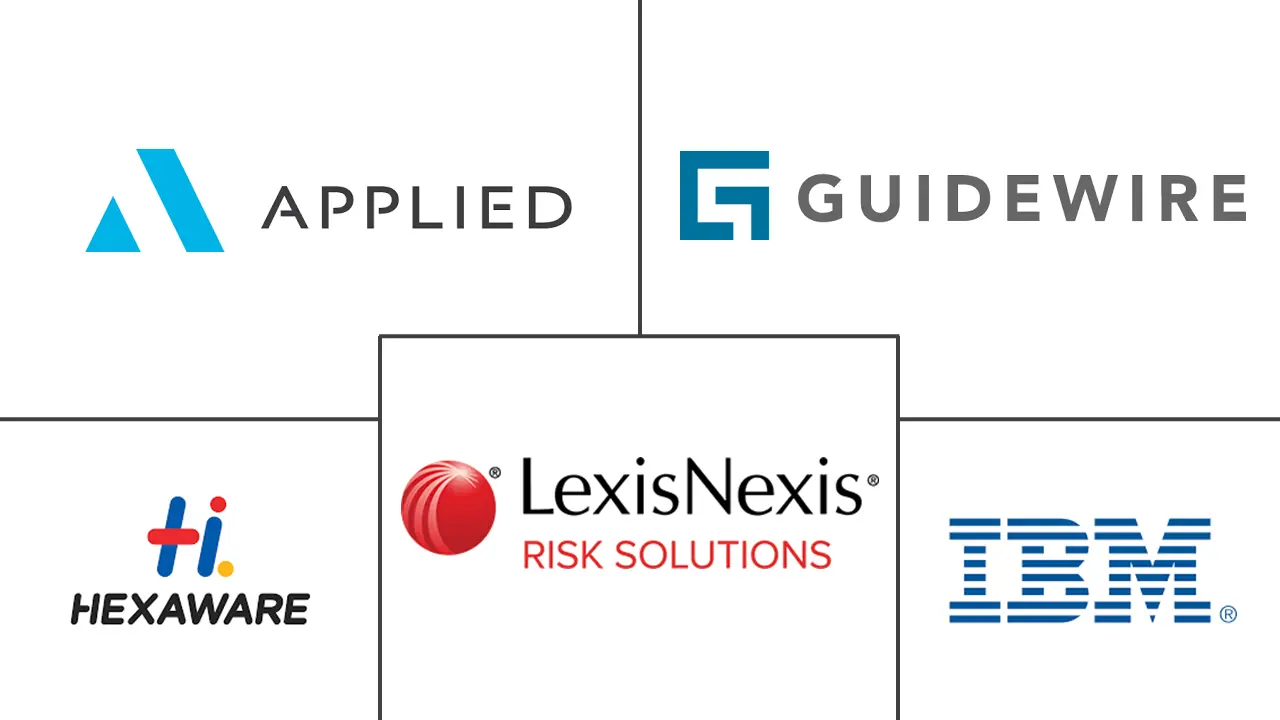
*Disclaimer: Major Players sorted in no particular order |
Need a report that reflects how COVID-19 has impacted this market and its growth?
Insurance Analytics Market Analysis
The Insurance Analytics Market was valued at USD 11.47 billion the previous year and is expected to register a CAGR of 15.9%, reaching USD 27.07 billion by the next five years.
- Companies can identify dubious claims, fraudulent activities, and behavioral patterns by using predictive analytics submitted for further research. This will improve the efficiency of claims, policy, and sales processes helping in sound business decisions. For instance customer lifetime value (CLV/CLTV) tool provides the client’s informative insights that enable forecasting the possibility of customer behavior and attitude, policy maintenance, or a policy surrender.
- These solutions are becoming more valuable with AI and machine learning integration. Using AI in the financial sector might boost profitability rates by 31% by 2035, according to a report by Accenture. Additionally, AI will likely make it possible to give tailored financial services to clients, improving the customer experience. As a result, AI-based insurance analytics solutions can help financial organizations cut costs by billions, increase revenues by billions, and decrease fraud. Advanced Analytics (AA) increased the operating profit of the top four performers by 10 to 25 percent in EMEA. They anticipate this impact to grow over the following two years.
- With the onset of the COVID-19 crisis, structural changes brought on by turbulence, uncertainty, and weak economic activity had essential ramifications for the insurance sector. These changes compelled insurance companies to rethink how they conducted business and interacted with customers. Also, the need for digital interactions and enhanced risk management for personal and health boosted investments in digital and analytics solutions. As a result, market growth was predicted throughout the study period.
- Data reliability and security are significant issues due to increased connection and distant accessibility. Concerns about nefarious parties getting access to personal data are very high. Historically, insurance companies have not been known to make significant expenditures in infrastructure, so purchasing and maintaining pricey security software will hinder the growth of the Insurance Analytics Market.
Insurance Analytics Market Trends
Increasing Risks And Fraudulent Activities Are Boosting the Adoption Of Insurance Analytics.
- Risks from man-made and natural disasters are regularly identified and managed in the insurance sector. The need for integrated risk management, which combines knowledge, control, and optimization of routine company operations, is high due to this uncertain risk. Insurance analytics solutions provide the crucial understanding to enhance risk management at all levels.
- 86% of insurance companies are creating insurance data analytics systems to provide the most accurate predictions of big data reports. Data analytics enable unprecedented creativity across all product categories and corporate functions. For instance, instead of depending on internal data sources like loss records, auto insurance started working on behavior-based analytics and incorporating credit ratings from credit bureaus into their study.
- Due to false claims, insurance firms suffer enormous losses every year. Insurers believe that between 10% to 20% of claims are fraudulent and that less than 20% of fraudulent claims are discovered. It is possible to detect fraudulent activities, suspicious claims, and behavioral patterns using predictive analytics incorporating statistical models for efficient fraud detection.
- AI for claims fraud detection is quite beneficial since it can immediately notice patterns, allowing them to identify anomalies and suspicious requests in real-time. Businesses are using AI to speed up the entire insurance claims process and gain access to more advanced fraud detection without adding more staff or spending more money.
- The speed at which claims are settled is crucial to determining how effectively an insurance company runs. Many claim-related tasks are processed quickly, and the entire claim-settlement process is streamlined post-adoption of data analytics' excellent abilities to process and analyze huge datasets.
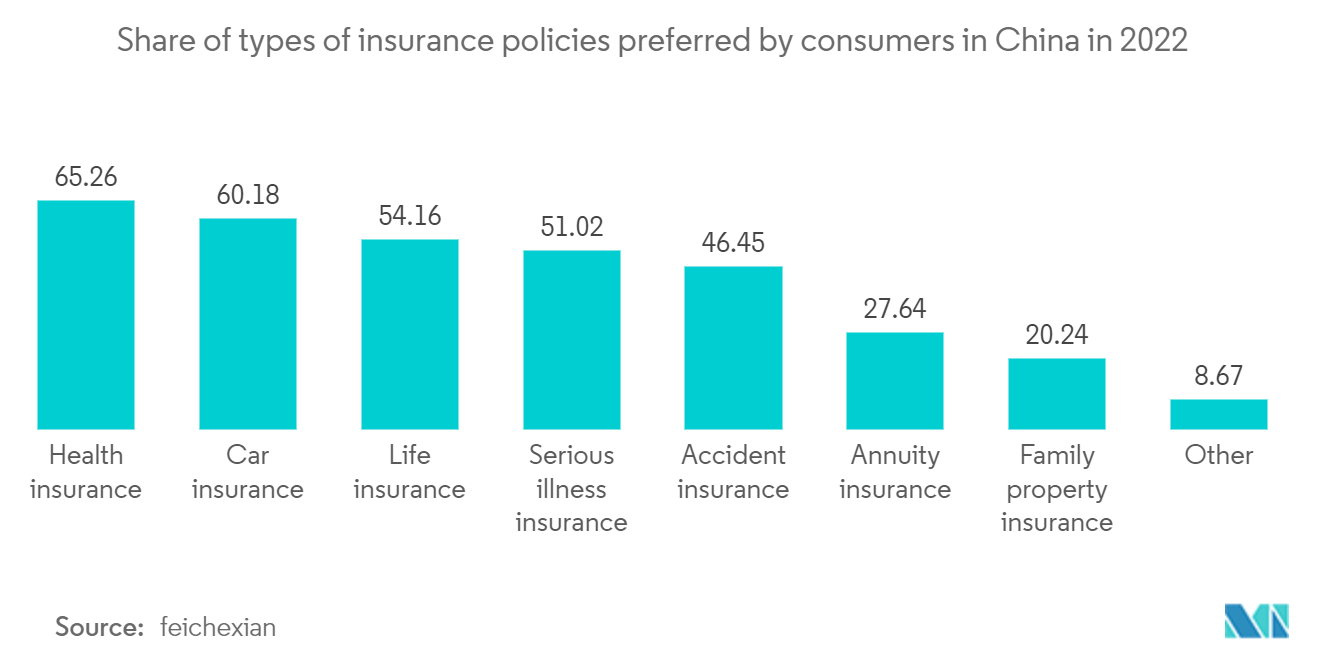
Asia-Pacific to Witness Highest Growth
- APAC region's insurance analytics markets are primarily driven by the increased adoption of digital infrastructure due to the growing need for customer and behavioral analytics, machine learning, and algorithm development. For instance, In India, Max Life Insurance launched a real-time analytics solution to identify false medical reports and provide relative health scores for a customer.
- Furthermore, populations in the Asia-Pacific region are becoming more urbanized, which brings all the health hazards related to a more sedentary lifestyle. This scenario will urge customers to invest in health insurance plans. Thus there is a vast opportunity for insurers to capture this newly added urban crowd, and data analytics can help study this customer base before issuing them any insurance.
- Insurance companies in the region are investing in automating processes with straight-through processing at the back end and digitally enabling distribution channels on the front end. For instance, Prudential collaborated with Google Cloud for its data analytics solution. Through this partnership, protection, health, and savings solutions will be more straightforward and accessible across Asia.
- In recent years, most Asia-Pacific markets relaxed their limitations on foreign ownership. Six of seven emerging Asia Pacific markets have permitted foreign investors to control and own a majority interest in domestic insurers.
- The laws and regulations for insurers in Asia-Pacific are constantly evolving. These regulatory improvements have focused on policyholder protection, capital preservation, and InsurTech promotion despite the varying degrees of development across various regional nations.
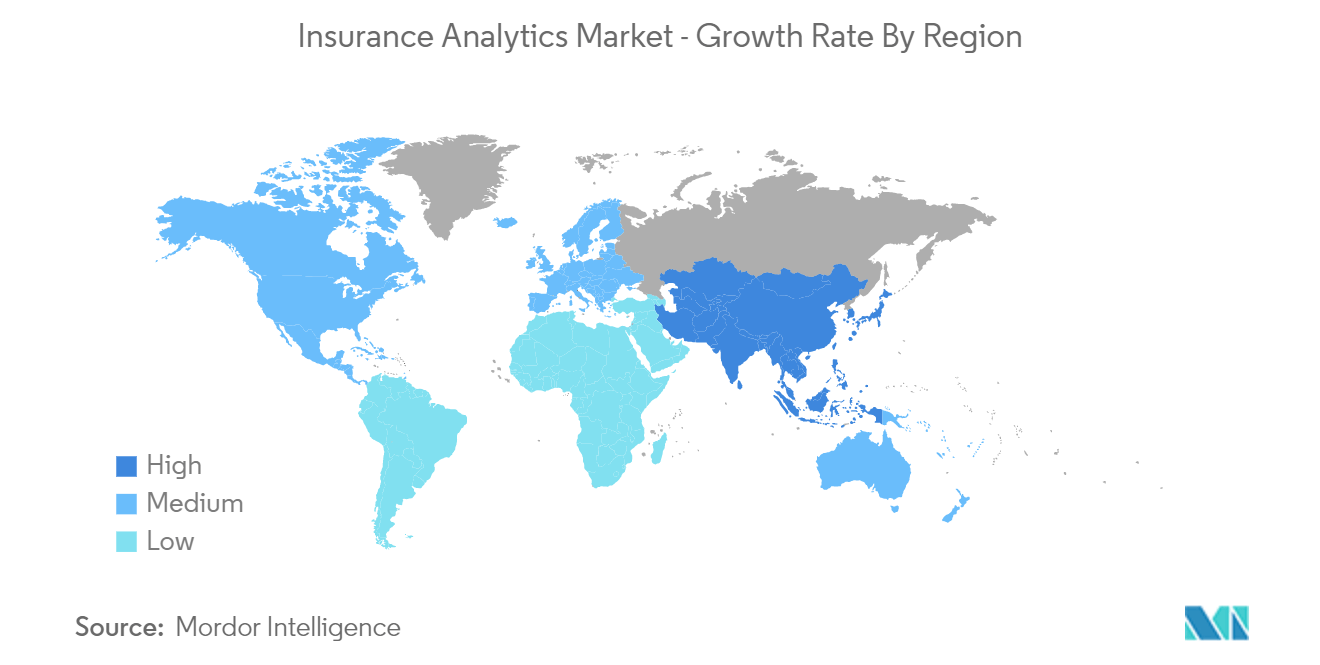
Insurance Analytics Industry Overview
Insurance Companies can use data analytics to learn more about client behavior and deliver customized solutions per user needs. These Analytics providers sign contracts with various companies to help them with Information Technology Software and services. As businesses shift to digital technologies, they have a wider scope of expansion. The insurance analytics market needs to be more cohesive. Players tend to invest in innovating their product offerings to cater to the insurance industry's changing demands.
In November 2022, The insurance company Groupama Biztostó in Hungary began utilizing Microsoft Teams Phone to streamline communication and collaboration while delivering enterprise-level security and a 70% reduction in telephony costs. With this new technology, 1,500 corporate agents can effectively collaborate from anywhere, allowing clients to get their questions answered right away.
In October 2022, Guidewire and One Inc came together to provide insurers with a ready-to-use joint solution that would hasten the delivery of a seamless payment experience for clients, adjusters, agents, and suppliers. As the insurance ecosystem was projected to grow more complex and consumer-focused, these analytical partner solutions were expected to give insurers the flexibility to serve policyholders with innovation.
In October 2022, LexisNexis Risk Solutions launched a real-world data hub powered by accurate data connecting technologies and superior, de-identified datasets from strategic data partners. Using patent-pending technology, the Gravitas Network gave researchers access to de-identified, clinically curated data that could be linked with unmatched precision. This allowed them to quickly gain the knowledge they needed to develop effective and secure treatments for the patients most needed.
Insurance Analytics Market Leaders
IBM Corporation
LexisNexis Risk Solutions
Hexaware Technologies Limited
Guidewire Software Inc.
Applied Systems Inc.
*Disclaimer: Major Players sorted in no particular order
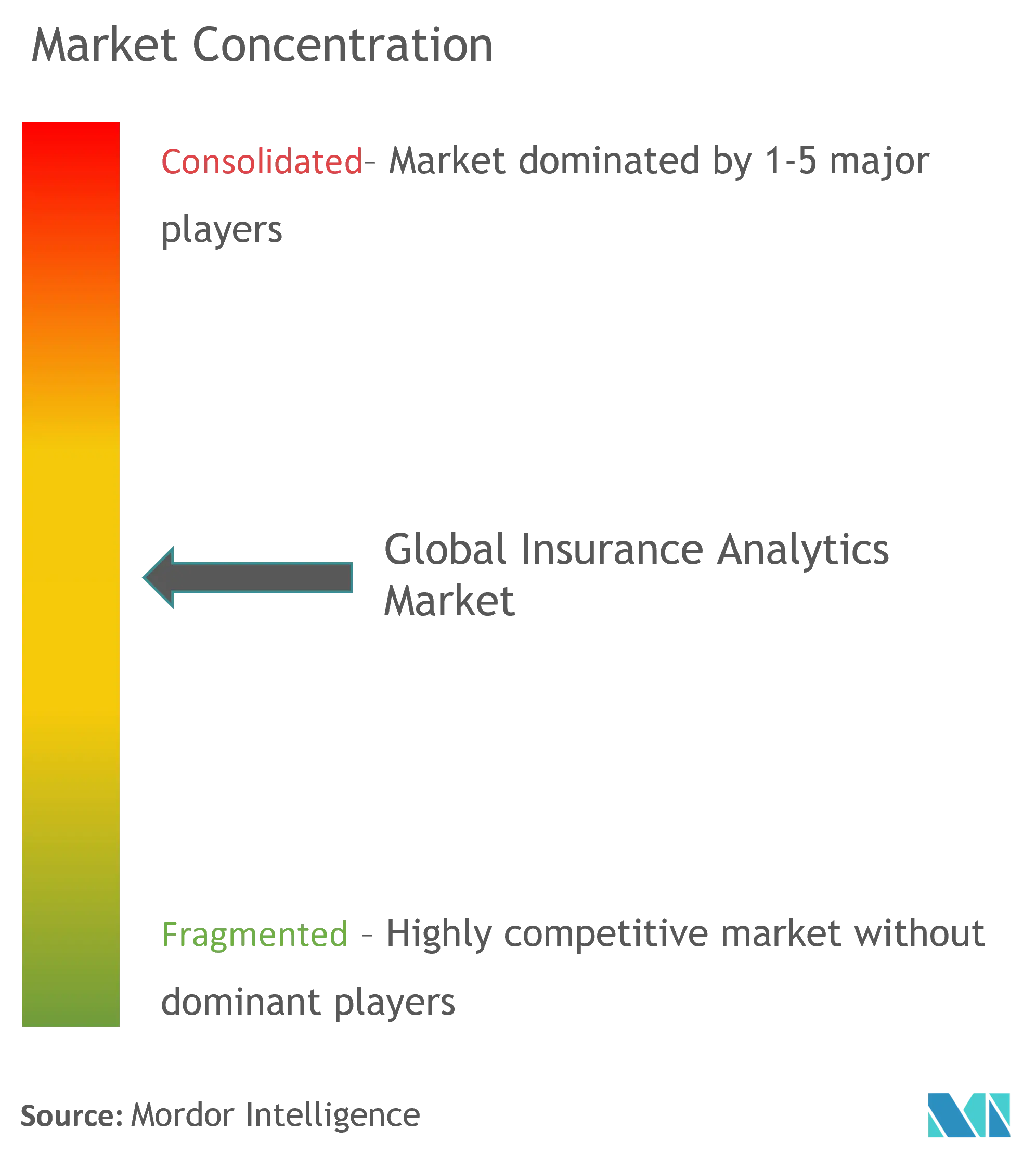
Insurance Analytics Market News
- April 2023: Guidewire launched the Garmisch solution to provide developers with more self-service tools on the Guidewire Cloud Console. Insurance companies can easily create and implement seamless, digital claims experiences using this solution. With ready-to-use bulk data connectors from top global data platforms, Garmisch reduces the time it takes for an organization to gain insight.
- February 2023: MS Amlin Insurance S.E. adopted a data analytics solution by Sapien. Sapiens IDITSuite is an award-winning, end-to-end, modular insurance platform driven by technology. Combined with the insurer's data produces actionable insights that enhance risk selection during underwriting and lower claim expense ratios. MS Amlin Insurance will likely first implement the concept in France and then expand to their markets in Belgium and the Netherlands.
- November 2022: IBM revised its Business Analytics Enterprise hub by introducing new analytics tools to assist businesses in overcoming data silos and analytics bottlenecks so they can quickly make data-driven choices and handle unforeseen interruptions. The new IBM Analytics Content Hub was to link internal stakeholders to various B.I. solutions for simple self-service data access to improve support for clients' end customers. Regardless of the vendor or location of the data, IBM Business Analytics Enterprise offered a solution to combine analytics tools in a single view.
Insurance Analytics Market Report - Table of Contents
1. INTRODUCTION
1.1 Study Assumptions and Market Definition
1.2 Scope of the Study
2. RESEARCH METHODOLOGY
3. EXECUTIVE SUMMARY
4. MARKET INSIGHTS
4.1 Market Overview
4.2 Industry Attractiveness - Porter's Five Forces Analysis
4.2.1 Bargaining Power of Suppliers
4.2.2 Bargaining Power of Consumers
4.2.3 Threat of New Entrants
4.2.4 Threat of Substitutes
4.2.5 Intensity of Competitive Rivalry
4.3 Assessment of the Impact of COVID-19 on the Industry
4.4 Market Drivers
4.4.1 Increased Adoption of Advanced Technologies
4.4.2 Rise in Competition among the Insurance Sector
4.5 Market Restraints
4.5.1 Stringent Government Regulations
4.5.2 Privacy and Security Concern
5. MARKET SEGMENTATION
5.1 By Component
5.1.1 Tool
5.1.2 Services
5.2 By Business Application (Qualitative Analysis)
5.2.1 Claims Management
5.2.2 Risk Management
5.2.3 Process Optimization
5.2.4 Customer Management and Personalization
5.3 By Deployment Mode
5.3.1 On-premise
5.3.2 Cloud
5.4 By End-User
5.4.1 Insurance Companies
5.4.2 Government Agencies
5.4.3 Third-party Administrators, Brokers, and Consultancies
5.5 By Geography
5.5.1 North America
5.5.2 Europe
5.5.3 Asia-Pacific
5.5.4 Rest of the World
6. COMPETITIVE LANDSCAPE
6.1 Company Profiles
6.1.1 IBM Corporation
6.1.2 LexisNexis Risk Solutions
6.1.3 Hexaware Technologies Limited
6.1.4 Guidewire Software Inc.
6.1.5 Applied Systems Inc.
6.1.6 Microsoft Corporation
6.1.7 MicroStrategy Incorporated
6.1.8 OpenText Corporation
6.1.9 Oracle Corporation
6.1.10 Sapiens International Corporation
- *List Not Exhaustive
7. VENDOR MARKET SHARE
8. MARKET OPPORTUNITIES AND FUTURE TRENDS
Insurance Analytics Industry Segmentation
Insurance Analytics is used to streamline the procedures for calculating and evaluating insurance risks and making judgments about insurance products. Insurance brokers and organizations may quickly analyze expenses using insurance analytics tools and solutions, ensure stable financial operations and liquidity, and keep tabs on operational costs like those associated with sales, marketing, operations, or customer service.
The Insurance Analytics Market is segmented by Component (Tools and Services), Business Applications (Claims Management, Risk Management, Process Optimization, Customer Management, and Personalization), Deployment Mode (On-premises and Cloud), End-User (Insurance Companies, Government Agencies, and Third-party Administrators, Brokers, and Consultancies), and Geography (North America, Europe, Asia-Pacific, and Rest of the World).
The market sizes and forecasts are provided in terms of value (USD).
| By Component | |
| Tool | |
| Services |
| By Business Application (Qualitative Analysis) | |
| Claims Management | |
| Risk Management | |
| Process Optimization | |
| Customer Management and Personalization |
| By Deployment Mode | |
| On-premise | |
| Cloud |
| By End-User | |
| Insurance Companies | |
| Government Agencies | |
| Third-party Administrators, Brokers, and Consultancies |
| By Geography | |
| North America | |
| Europe | |
| Asia-Pacific | |
| Rest of the World |
Insurance Analytics Market Research FAQs
What is the current Global Insurance Analytics Market size?
The Global Insurance Analytics Market is projected to register a CAGR of 15.9% during the forecast period (2023-2028).
Who are the key players in Global Insurance Analytics Market?
IBM Corporation, LexisNexis Risk Solutions, Hexaware Technologies Limited, Guidewire Software Inc. and Applied Systems Inc. are the major companies operating in the Global Insurance Analytics Market.
Which is the fastest growing region in Global Insurance Analytics Market?
Asia Pacific is estimated to grow at the highest CAGR over the forecast period (2023-2028).
Which region has the biggest share in Global Insurance Analytics Market?
In 2023, the North America accounts for the largest market share in the Global Insurance Analytics Market.
Global Insurance Analytics Industry Report
Statistics for the 2023 Insurance Analytics market share, size and revenue growth rate, created by Mordor Intelligence™ Industry Reports. Insurance Analytics analysis includes a market forecast outlook to for 2023 to 2028 and historical overview. Get a sample of this industry analysis as a free report PDF download.
